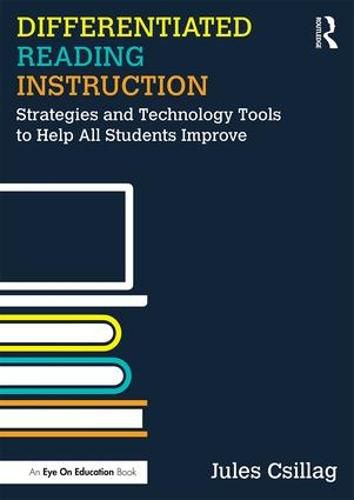Readings Newsletter
Become a Readings Member to make your shopping experience even easier.
Sign in or sign up for free!
You’re not far away from qualifying for FREE standard shipping within Australia
You’ve qualified for FREE standard shipping within Australia
The cart is loading…






Learn how tech tools can make it easier to differentiate reading instruction, so you can reach all of your students and help them increase their fluency and comprehension. This practical guide brings together evidence-based principles for differentiated reading instruction and user-friendly tech tools, to help middle level students grow as readers in fun, interactive, and engaging ways. You’ll find out how to:
Use text-to-speech tools to facilitate decoding and fluency development;
Develop tech-based vocabulary lessons for direct and contextual instruction;
Get your students engaged in research and nonfiction texts with videos, custom search engines, and interactive annotation tools;
Differentiate your fiction reading instruction with visualization, prediction, and summarization exercises;
Encourage students to enhance their reading through using dictation software and diverse Google tools;
Create your own formative and summative assessments for students at all levels of reading ability.
Throughout the book, ideas are provided for both basic technology use and for more advanced applications–so no matter your comfort level with technology, you’ll find strategies that you can implement in your classroom immediately.
$9.00 standard shipping within Australia
FREE standard shipping within Australia for orders over $100.00
Express & International shipping calculated at checkout
Learn how tech tools can make it easier to differentiate reading instruction, so you can reach all of your students and help them increase their fluency and comprehension. This practical guide brings together evidence-based principles for differentiated reading instruction and user-friendly tech tools, to help middle level students grow as readers in fun, interactive, and engaging ways. You’ll find out how to:
Use text-to-speech tools to facilitate decoding and fluency development;
Develop tech-based vocabulary lessons for direct and contextual instruction;
Get your students engaged in research and nonfiction texts with videos, custom search engines, and interactive annotation tools;
Differentiate your fiction reading instruction with visualization, prediction, and summarization exercises;
Encourage students to enhance their reading through using dictation software and diverse Google tools;
Create your own formative and summative assessments for students at all levels of reading ability.
Throughout the book, ideas are provided for both basic technology use and for more advanced applications–so no matter your comfort level with technology, you’ll find strategies that you can implement in your classroom immediately.